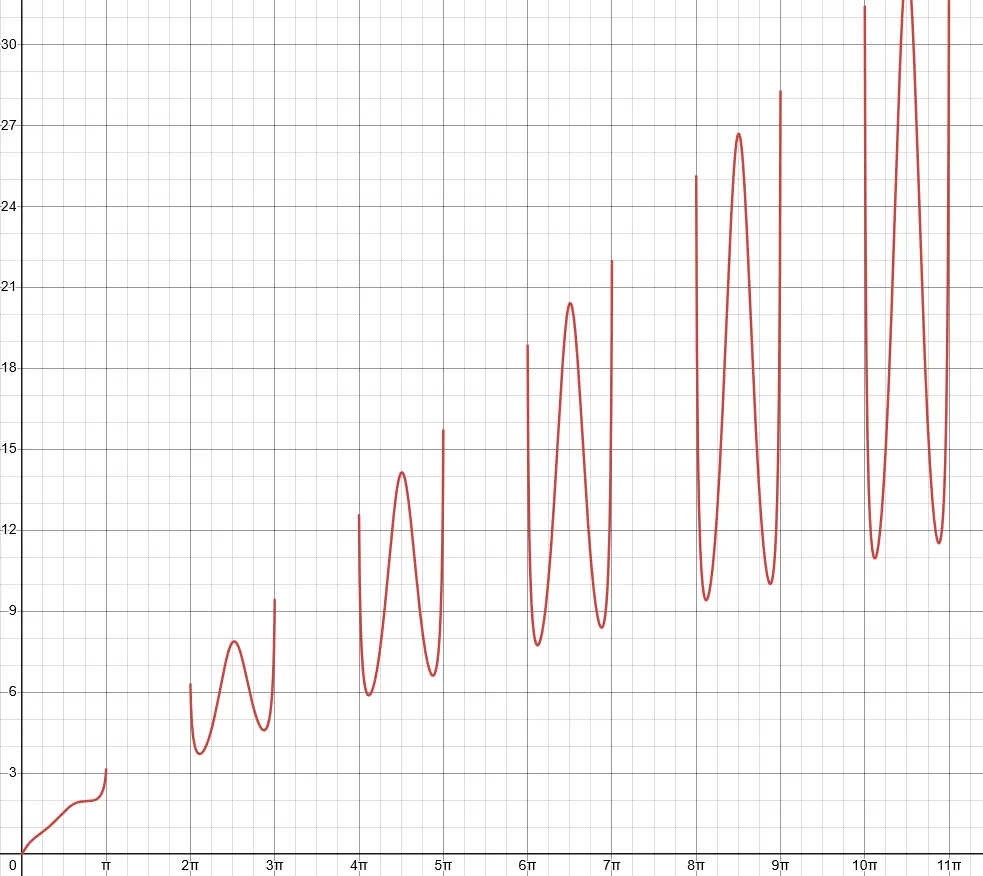

The value of \(f\) depends on the value of \(g=(\sin x)^{\sin x}\), it is obvious the maximum value of \(g\) is 1, therefore the upper bound of \(f\) would be \(y=x\).
The minimum of \(g\) can be found using its derivative, \(g’=g\cos x(\ln(\sin x) + 1)\). By inspection \(g\) is never 0, through checking its critical points we can find its minimum occurs when \(x=\arcsin e^{-1}\). Therefore the lower bound of \(f\) would be \(y=x^{g(\arcsin e^{-1})}\).
$$x^{\left(e^{-1}\right)^{\left(e^{-1}\right)}}\leq f(x)\leq x$$
After plotting in Desmos, I noticed that bounds are reversed for \(x\lt 1\). I don’t know why that is the case for now, but in conclusion.
$$ \begin{align*} x^{\left(e^{-1}\right)^{\left(e^{-1}\right)}}&\leq f(x)\leq x\qquad\text{for $x\geq 1$}\\ x^{\left(e^{-1}\right)^{\left(e^{-1}\right)}}&\geq f(x)\geq x\qquad\text{for $x\lt 1$} \end{align*} $$